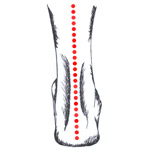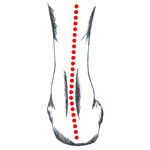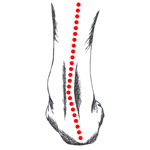So where have the days gone of simply purchasing some shoes to run in and then hitting the pavement? While some of you may long for the days of yesteryear, the seeming complexity of your next running shoe purchase is actually a very good thing and may very well help prevent common overuse injuries. With this in mind, it is my goal to help demystify running shoes and explain what is going on.
For many people a shoe is just something you put on your feet: the shoe will have a rubber sole, a cloth upper, and some laces to tie, basically think of the Converse Chuck Taylors. A shoe like this will provide some cushion while you walk but is probably not the best to go running in for most people. So if a shoe like that will not work for most people then what will? For the sake of simplicity I am going to break running shoes down into three distinct categories and explain a bit about each category.
Neutral shoes are best for runners that do no pronate meaning the ankle does not roll excessively inward during as it hits the ground. These shoes are best for people with high arches and will provide a high level of midsole cushioning for the wearer.

Stability shoes are the most commonly used type of running shoes since a very high percentage of people pronate, pronation refers to the rolling in of the ankle while running. The runner’s outside heel will strike the ground first then, as they transition to their mid and forefoot, the ankle will slightly roll in. This slight rolling in may cause overuse injuries during the runners lifetime, so the proper shoes is essential. A stability shoe will typically have a two tone color on the medial (inside) portion of the shoe, the darker color is a denser foam and is called a medial block. This building up of the inside portion of the shoe will help prevent the ankle for rolling in too much.

Motion control shoes are for individuals that pronate excessively, meaning the ankle rolls in in such a way that does not allow the foot and ankle to properly stabilize the body. This extreme motion in not very common but shoes with a high level of medial support is required to counteract the effects of this motion.

So, hopefully you have found this to be informative and you leave knowing more about running shoes then you did before. If you have remaining questions please do not hesitate to stop by The Cyclery and speak with someone in the running department. All of our running shoe staff has the ability to properly assess your gait for pronation and get you in the proper running shoes.
No comments:
Post a Comment